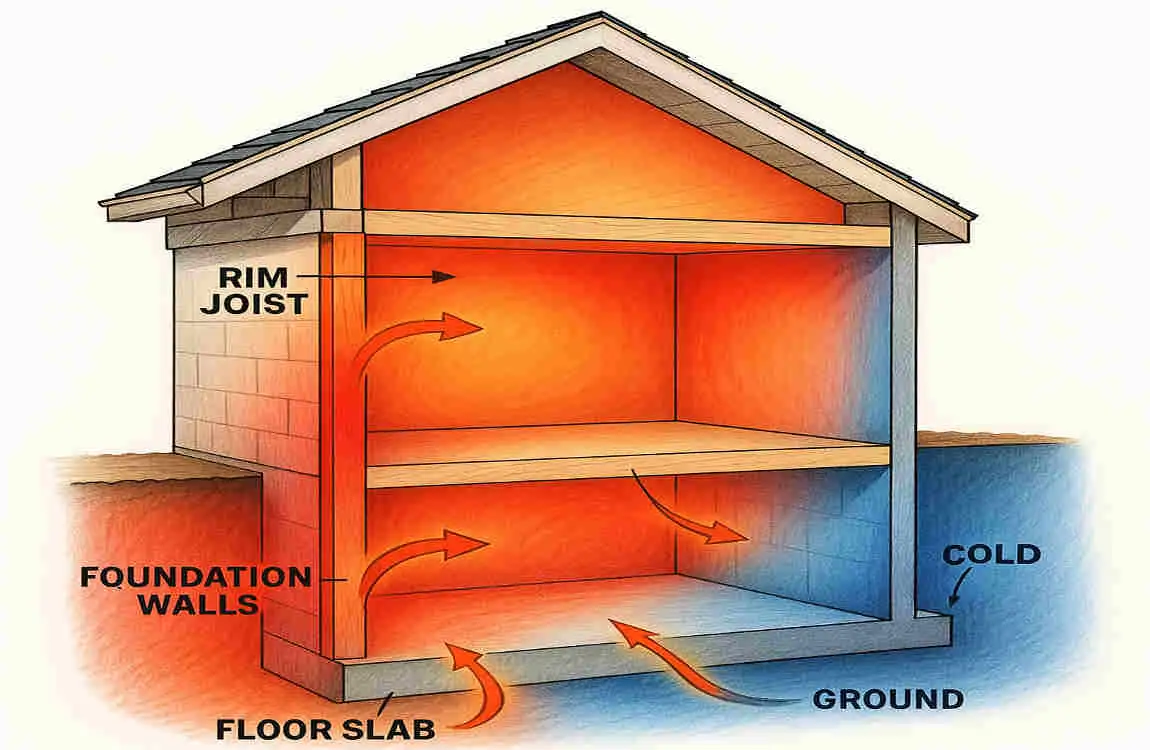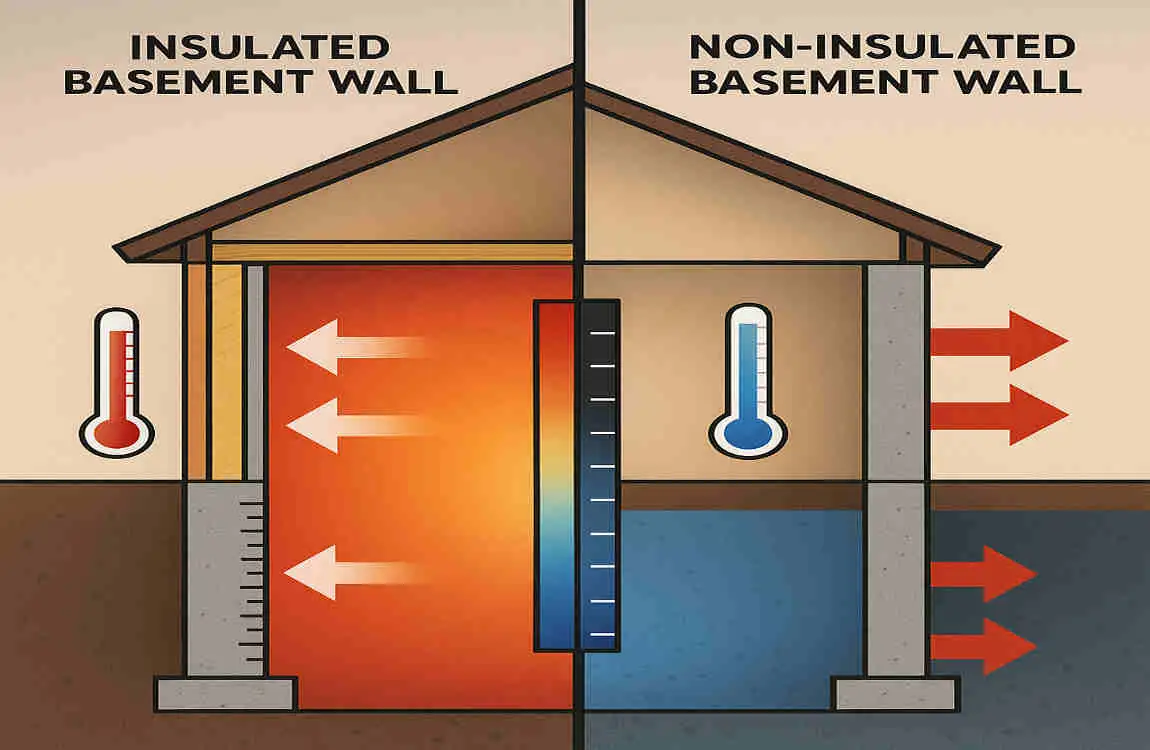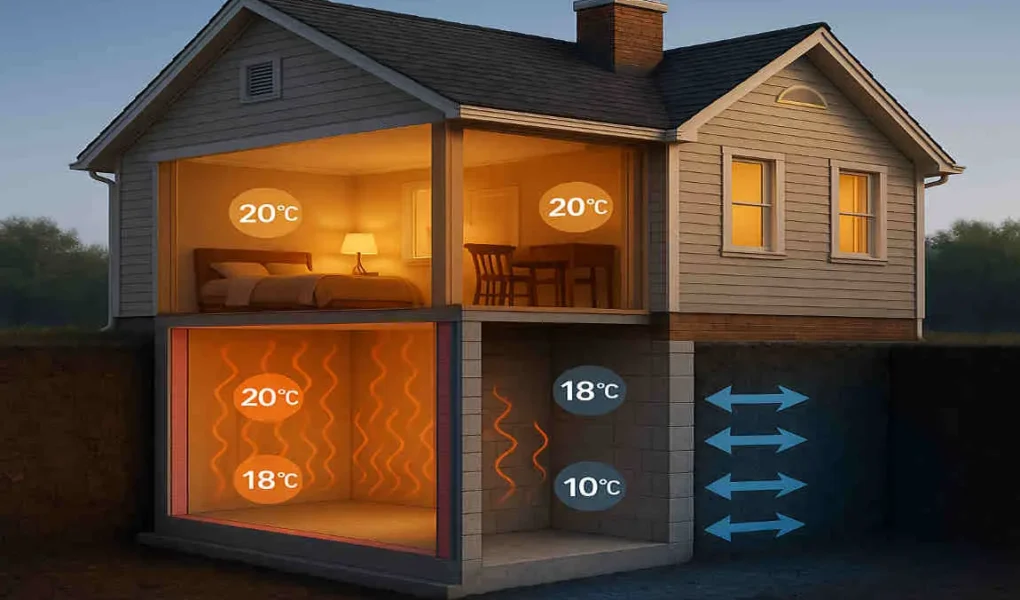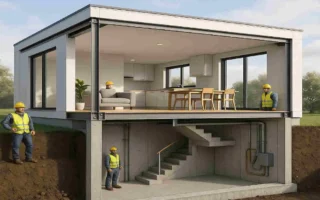Hey there, homeowner! Imagine stepping into your basement on a chilly winter morning, only to feel like you’ve wandered into an icebox. It’s not just uncomfortable—it’s a sneaky thief stealing warmth from your entire home. That’s where basement insulation comes in, and today, we’re diving deep into a question that’s on many minds: Does insulating basement walls help keep your house warm?
As a real estate agent who’s seen countless homes transformed through smart upgrades, simple changes like this can make a world of difference. Not only does it tie into home decor by creating cosier spaces for family rooms or home offices, but it also boosts energy efficiency. Think about it—your home is more than just walls and a roof; it’s a sanctuary that should feel warm and inviting throughout the year.
Energy efficiency isn’t just a buzzword—it’s about saving money and maintaining a comfortable environment. According to the U.S. Department of Energy, uninsulated basements can account for up to 30% of a home’s heat loss.
Understanding Basement Heat Loss

Picture this: Your basement walls are like a leaky bucket, letting precious heat drip away. To answer whether insulating basement walls helps keep your house warm, we first need to understand how heat escapes in the first place. Heat loss occurs through three primary mechanisms: conduction, convection, and radiation. Don’t worry—I’ll explain each one.
Conduction is like heat playing tag through solid materials. It moves from warmer spots to cooler ones, right through your basement walls. If those walls touch cold earth outside, heat from inside your home transfers out, making everything feel chillier.
Then there’s convection, which is all about air movement. Warm air rises, but in a drafty basement, it can escape through cracks, drawing in cold air. It’s a constant cycle that lowers the temperature throughout your entire house.
Finally, radiation involves heat waves bouncing around like invisible rays. Your warm basement floor or walls can radiate heat to colder surfaces, losing energy without any direct contact.
Basement walls play a key role here because they’re often in direct contact with the ground, which remains cooler than the air above. This makes them a significant pathway for heat to escape. In fact, experts say basements can contribute to 15-30% of a home’s total heat loss, depending on your location.
What about the materials? Common basement walls are made of concrete, cinder blocks, or even poured cement. These are sturdy, but they’re terrible at holding in heat—they’re like sponges for cold. Concrete has a low R-value (a measure of insulation power, typically around 0.1-0.2 per inch), allowing heat to slip away easily.
Why do basements feel so cold? It’s not just the materials; it’s the environment. Underground spaces are often exposed to constant moisture from the soil, which intensifies the damp, chilly feel. This cold air then rises, affecting upper floors. I’ve toured homes as a real estate agent where unfinished basements made the whole place feel drafty—ruining that cosy home decor vibe.
You might notice this in your own home: colder feet in the kitchen or uneven heating bills. It’s frustrating, right? But understanding this sets the stage for why insulation could be your hero. Let’s move on to how it actually works.
How Insulating Basement Walls Works
Okay, reader, let’s get practical. You’ve got the basics of heat loss—now, how does adding insulation to those basement walls flip the script? Simply put, insulation acts like a cosy blanket, slowing down heat transfer and helping to answer the question of whether insulating basement walls helps keep your house warm.
First, meet the stars of the show: insulation materials. Foam board is rigid and easy to cut, making it perfect for DIY enthusiasts. It creates a solid barrier against conduction. Spray foam expands to fill gaps, sealing out drafts like a pro. Fibreglass batts are fluffy and affordable, trapping air to fight convection. Other options include mineral wool or cellulose, each with its strengths.
These materials work by trapping tiny air pockets that resist heat flow. They reduce conduction by blocking direct contact, curb convection by limiting air movement, and even minimise radiation with reflective layers in some types.
Now, where do you insulate? Interior insulation is applied to the inside walls—think of attaching foam boards and framing over them. It’s easier and cheaper, but it may occupy your basement space. Exterior insulation wraps the outside, dug around the foundation. It’s more invasive but tackles moisture from the soil head-on.
Either way, insulation stabilises temperatures. It keeps the basement warm in winter and cool air out in summer. This means your upstairs rooms stay more consistent—no more cranking the thermostat.
Imagine your home as a thermos: Insulation seals the deal, preventing heat from escaping through the walls. Studies show it can improve energy efficiency by 20-40%, depending on your setup. As someone in real estate, I’ve seen clients turn drafty basements into warm playrooms, enhancing home decor without major renovations.
But does this really make the whole house warmer? Absolutely—it creates a thermal envelope that protects your entire living space. Stick around; the benefits are even more exciting.
Benefits of Insulating Basement Walls
Let’s talk wins, because who doesn’t love a good payoff? When you insulate your basement walls, you’re not just answering the question of whether insulating basement walls helps with a resounding yes—you’re unlocking several perks that make your home life better.
Start with energy savings. Insulated walls reduce heat loss, allowing your furnace to operate more efficiently. This could reduce heating bills by 10-25%, according to energy audits. Over time, that adds up—think extra cash for that home decor project you’ve been eyeing on sites like homeimprovementcast.co.uk.
Then there’s increased comfort. No more icy basements dragging down the house temperature. Rooms feel evenly warmer from the basement up. You wake up to a toasty home, not shivering under blankets. It’s like giving your house a hug from the inside.
Moisture is a sneaky enemy, but insulation fights back. Adding barriers prevents condensation that can lead to mould growth. This maintains high air quality and prevents health issues. Damp basements? Not anymore—insulation helps manage humidity, protecting your walls and decor.
Here’s a big one for real estate fans like me: property value boost. An insulated basement signals energy efficiency to buyers, potentially increasing your home’s worth by 5-10%. It’s a smart upgrade that pays off when selling—I’ve listed homes where this feature sealed the deal.
Don’t forget the planet. By using less energy, you reduce your carbon footprint. It’s a small step toward eco-friendly living, aligning with modern home improvement trends.
You might be thinking, “Is this worth it for my home?” Absolutely—especially if you live in colder climates. These benefits compound, creating a warmer, healthier, more valuable space. Let’s back this up with some evidence next.
To highlight the perks, here’s a quick bulleted list of real-world impacts:
- Lower bills: Save hundreds annually on heating.
- Healthier Home: Reduce Allergens from mould.
- Eco-win: Cut emissions equivalent to planting trees.
- Long-term value: Insulation lasts 20 years or more.
Engaging, right? Now, let’s examine the data.
Does Insulating Basement Walls Help Keep Your House Warm? Evidence & Case Studies

Alright, sceptic—let’s get to the proof. We’ve talked theory, but does insulating basement walls help in real life? Research says yes, and I’ll share the details to convince you.
Experts from the Building Science Corporation cite studies that show basement insulation can reduce heat loss by up to 50%. A Department of Energy report echoes this, noting that proper wall insulation stabilises home temperatures, resulting in significant reductions in energy use.
Take a case study from Minnesota: A 1980s home with uninsulated concrete walls lost heat rapidly. After adding spray foam interior insulation, the owners reported a 22% drop in heating costs. The basement temperature dropped from 55°F to a steady 68°F, warming the entire house.
Another example? In Canada, a study by Natural Resources Canada followed 50 homes. Those with insulated basements experienced an overall 15-20% improvement in warmth, with fewer cold spots upstairs. Homeowners shared testimonials like, “Our living room feels cosier now—no more drafts!”
But what about misconceptions? Some folks think basements don’t need insulation if they’re unfinished. Wrong! Even storage spaces affect the upstairs heat. Others worry about cost, but payback periods are often 3-5 years through savings.
Doubts addressed? The evidence is clear—insulation works. It not only keeps your house warm but transforms basements into usable, comfortable spaces.
Choosing the Right Insulation for Your Basement Walls
Decision time! With so many options, how do you choose insulation that addresses whether insulating basement walls is beneficial for your specific home? Let’s break it down, considering your climate, budget, and basement setup.
Climate matters. In cold areas, opt for high R-value materials, such as spray foam (R-6 per inch), to combat harsh winters. Milder spots? Fibreglass (R-3-4 per inch) might suffice.
Budget and condition: Assess your walls—do they have cracks or water issues? Fix those first. Costs range from $1 to $ 5 per square foot, depending on the type.
Here’s a table comparing popular options for clarity:
Insulation Type Cost per Sq Ft R-Value per Inch Installation Difficulty Pros Cons
Foam Board $1-2 4-5 Easy (DIY-friendly) Rigid, moisture-resistant Less flexible for gaps
Spray Foam $3-5 6-7 Moderate (pro recommended) Seals cracks perfectly More expensive, messy
Fibreglass Batts $0.50-1.50 3-4 Easy, Affordable, widely available. Absorbs moisture if not sealed
Mineral Wool $1.50-3 3-4 Moderate Fire-resistant, soundproof Heavier, pricier than fibreglass
See? Spray foam shines in terms of efficiency, but fibreglass wins on wallet-friendliness.
DIY vs pro: If you’re handy, tackle interior foam boards yourself—save 30-50% on labour. However, for exterior work or spray foam, it’s best to call professionals to avoid mistakes.
Maintenance is key: Check for moisture yearly; most last 20-50 years. As a real estate tip, choose durable options to appeal to future buyers.
Weigh these factors, and you’ll land on the perfect fit. Your home will thank you!
Additional Tips for Improving Basement Warmth
Insulation is excellent, but let’s take it a step further with extras. These tips complement insulating basement walls to maximise warmth.
First, seal air leaks. Hunt for cracks in foundations and walls—use caulk or foam sealant to seal them. This prevents cold air infiltration, enhancing the insulation’s effectiveness.
Add vapour barriers next. These plastic sheets block soil moisture, preventing dampness that cools your space. Install them behind insulation for best results.
Ventilation strategies matter too. Use exhaust fans to control humidity without over-cooling. Balance fresh air with warmth—aim for controlled vents.
For extra heat, consider complementary options. Radiant floor heating warms from below, or space heaters provide targeted boosts. Pair these with insulation for ultimate cosiness.
Here’s a numbered list of quick steps to get started:
- Inspect your basement for leaks and seal them immediately.
- Install a vapour barrier during insulation work.
- Add a dehumidifier for moisture control.
- Test small heating solutions before committing.
These tweaks, combined with wall insulation, create a warmer basement that enhances your home decor. Simple.




